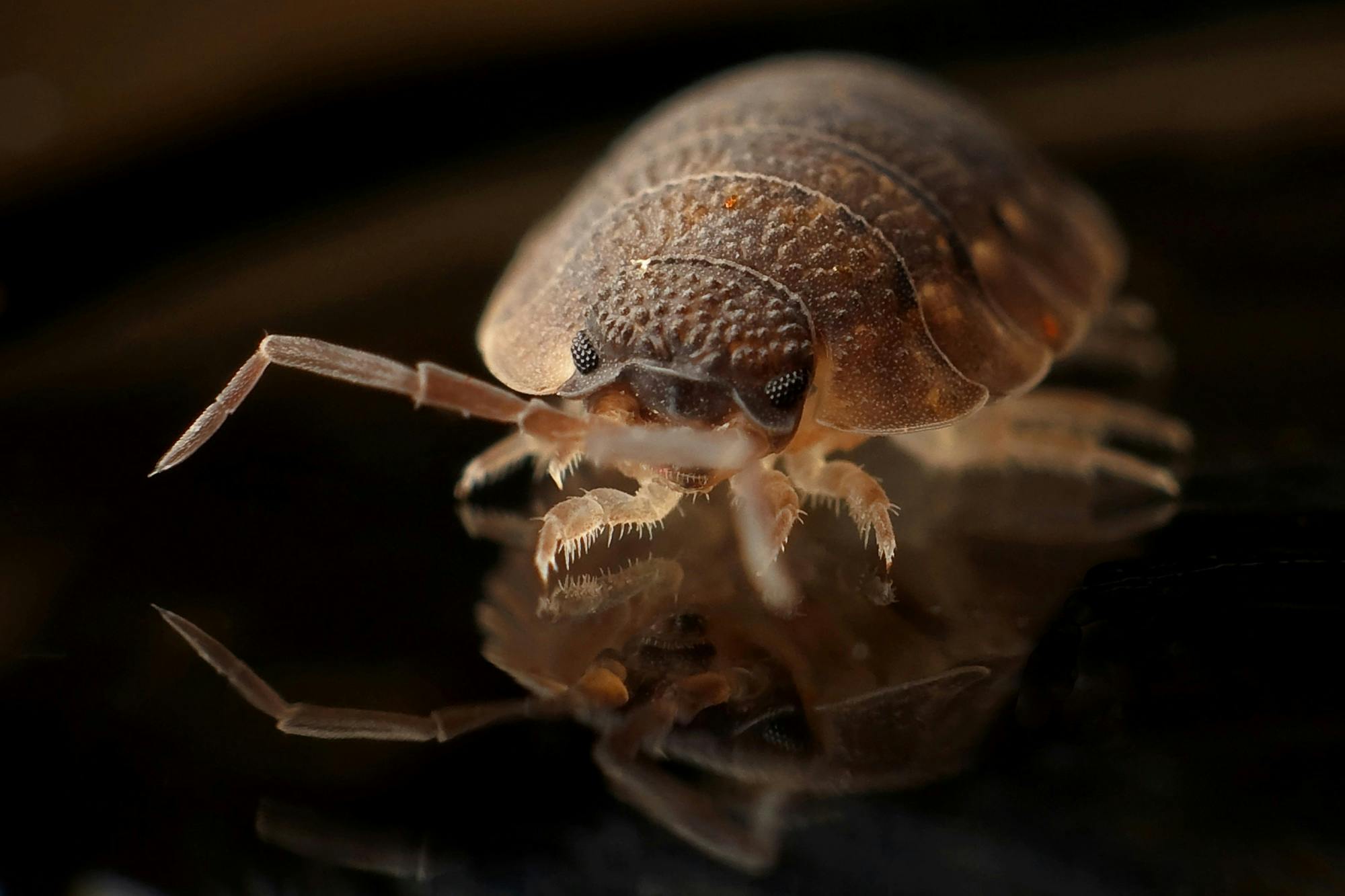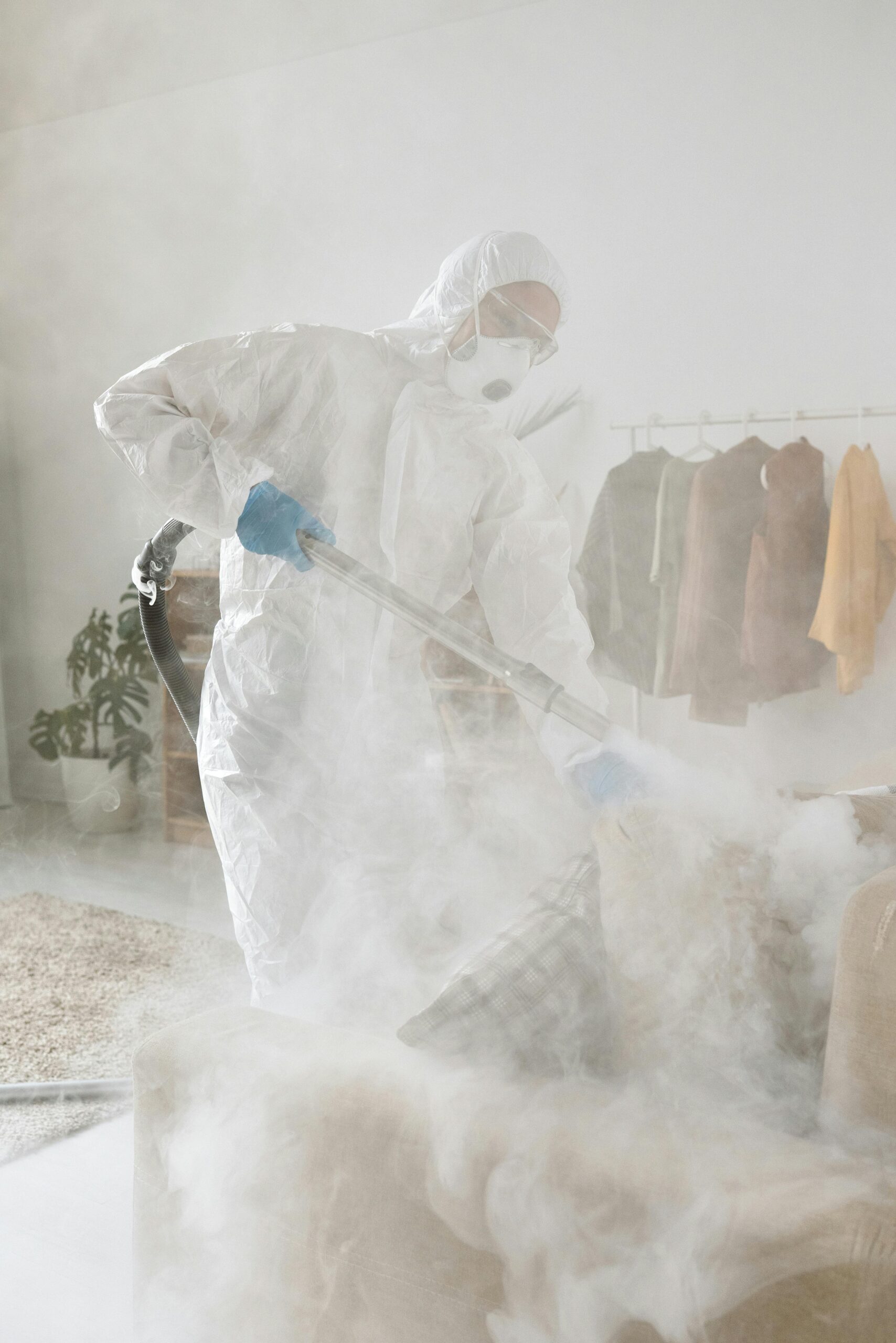When it comes to dealing with bed bugs, trained bed bug sniffing dogs have been helping our pest control technicians as we turn into a unique solution. In this article, we will explore how trained canines can help detect bed bugs, the advantages they offer over human inspectors, and what factors can affect the accuracy of their inspections.
By learning about canine bed bug inspection, property owners can make informed decisions to protect their spaces and ensure early detection and elimination of bed bug infestations.
What is a canine bed bug inspection?
Bed bug detection dogs, such as Labrador Retrievers and German Shepherds, are among the breeds that receive training to detect bed bugs. These dogs train to differentiate between live and dead bed bugs. With their keen sense of smell and efficient bed bug detection skills, these canines serve as invaluable allies in helping pest control professionals conduct thorough inspections and implement effective treatment strategies.
In approximately 2011, bed bug dog inspections started becoming certified to assist pest control professionals in field investigations. These dogs undergo a high level of continuous training to maintain their detection skills and accuracy. During inspections, our trainer-dog teams systematically inspect areas hidden from humans, and when they detect bed bugs, dogs signal their findings by scratching near the areas of infestation. This efficient bed bug detection method is revolutionary for EasyPM’s pest control practices, offering a reliable and proactive approach to combating bed bug infestations.
Understanding How Trained Dogs Detect Bed Bugs

Trained canines have become invaluable allies in the battle against bed bugs, thanks to their remarkable olfactory abilities. Through specialized training, these dogs can detect the distinct scent of bed bugs in homes with astonishing accuracy. Handlers work closely with their canine partners to conduct thorough inspections of infested areas, relying on the dogs’ keen sense of smell to pinpoint even the most elusive bed bug hiding spots.
The canine olfactory system is truly remarkable, capable of detecting odors in concentrations as low as parts per trillion. This sensitivity allows trained dogs to sniff out the unique chemical compounds emitted by bed bugs, even when they are hidden within walls, furniture, or other inaccessible areas. Unlike human inspectors, whose visual inspections may overlook bed bugs in hard-to-reach places, trained bed bug detection dogs can quickly and accurately locate infestations, ensuring no hiding spot goes unchecked.
Advantages of Using Dogs Over Human Inspectors

Using trained dogs for bed bug inspection offers several advantages over traditional human inspectors:
- Accuracy: Dogs boast an impressive accuracy rate, often exceeding 90%, in detecting bed bugs and their eggs. Their sensitive noses enable them to identify infestations with precision, reducing the risk of false negatives or positives.
- Efficiency: Canine inspections are typically much faster than human inspections, allowing for thorough assessments of large areas in a fraction of the time. This efficiency is especially beneficial in commercial settings such as hotels, where rapid detection is crucial for preventing widespread infestations.
- Non-Invasive: Unlike visual inspections or the use of invasive detection tools, canine inspections are non-invasive and pose no risk of damage to property. Dogs can sniff out bed bugs without the need for extensive dismantling or disruption, minimizing inconvenience to occupants.
- Versatility: Trained bed bug detection dogs can work in a variety of environments, including homes, hotels, schools, and healthcare facilities. Their agility and adaptability make them valuable assets in the fight against bed bugs wherever they may lurk.
Canine bed bug inspection represents a highly effective and efficient approach to detecting and combating infestations. By harnessing the power of dogs’ unparalleled sense of smell, property owners can ensure early detection and swift elimination of bed bugs, preserving the comfort and well-being of occupants.
Canine Inspections vs. Regular Visual Inspections

When comparing canine inspections to visual inspections, several factors come into play:
- Sensitivity: Canine inspections often outperform visual inspections in terms of sensitivity to bed bug odors. Dogs can detect low levels of infestation that may be missed by human inspectors, leading to more accurate detection.
- Speed: Canine inspections are typically faster than visual inspections, especially in large or complex properties. Dogs can cover more ground quickly, providing efficient and thorough detection.
- Objectivity: Canine inspections offer an objective assessment of bed bug presence, as dogs rely solely on their sense of smell. In contrast, visual inspections may be influenced by human bias or oversight.
- Detection of Hidden Infestations: Canine inspections excel at detecting bed bugs in hidden or inaccessible areas, such as behind walls or within furniture. Visual inspections may struggle to identify infestations in these locations.
Factors Influencing the Accuracy of Canine Bed Bug Inspection

There are several crucial factors that can significantly influence the accuracy and effectiveness of canine bed bug inspections.
- Training Quality: The effectiveness of canine inspections depends on the quality of the dog’s training and the experience of the handler. Well-trained dogs with regular reinforcement tend to exhibit higher accuracy rates.
- Environmental Conditions: Environmental factors such as temperature, humidity, and air currents can affect the performance of detection dogs. Optimal conditions enhance scent dispersion and detection capabilities.
- Handler Competence: The handler’s ability to interpret the dog’s behavior and correctly identify indication cues is crucial for accurate detection. Proper communication and collaboration between the dog and the handler are essential.
- False Positives: Canine inspections may occasionally produce false positive indications, where the dog alerts to the presence of bed bugs that are not actually present. Minimizing false positives requires ongoing training and validation exercises.
EasyPM – Pest Control Professional and Canine Bed Bug Exterminator
At EasyPM, we prioritize the safety and comfort of our clients by offering proactive solutions to combat bed bug infestations. Our canine bed bug inspection services provide an efficient and accurate method for detecting these pests, ensuring thorough inspections even in hard-to-reach areas. With trained dogs and experienced handlers, we guarantee reliable results that give our clients peace of mind, knowing their properties are free from bed bugs.
Schedule a canine bed bug inspection with EasyPM today and experience the difference in pest detection and eradication. Protect your property and enjoy a worry-free environment with our trusted services.






